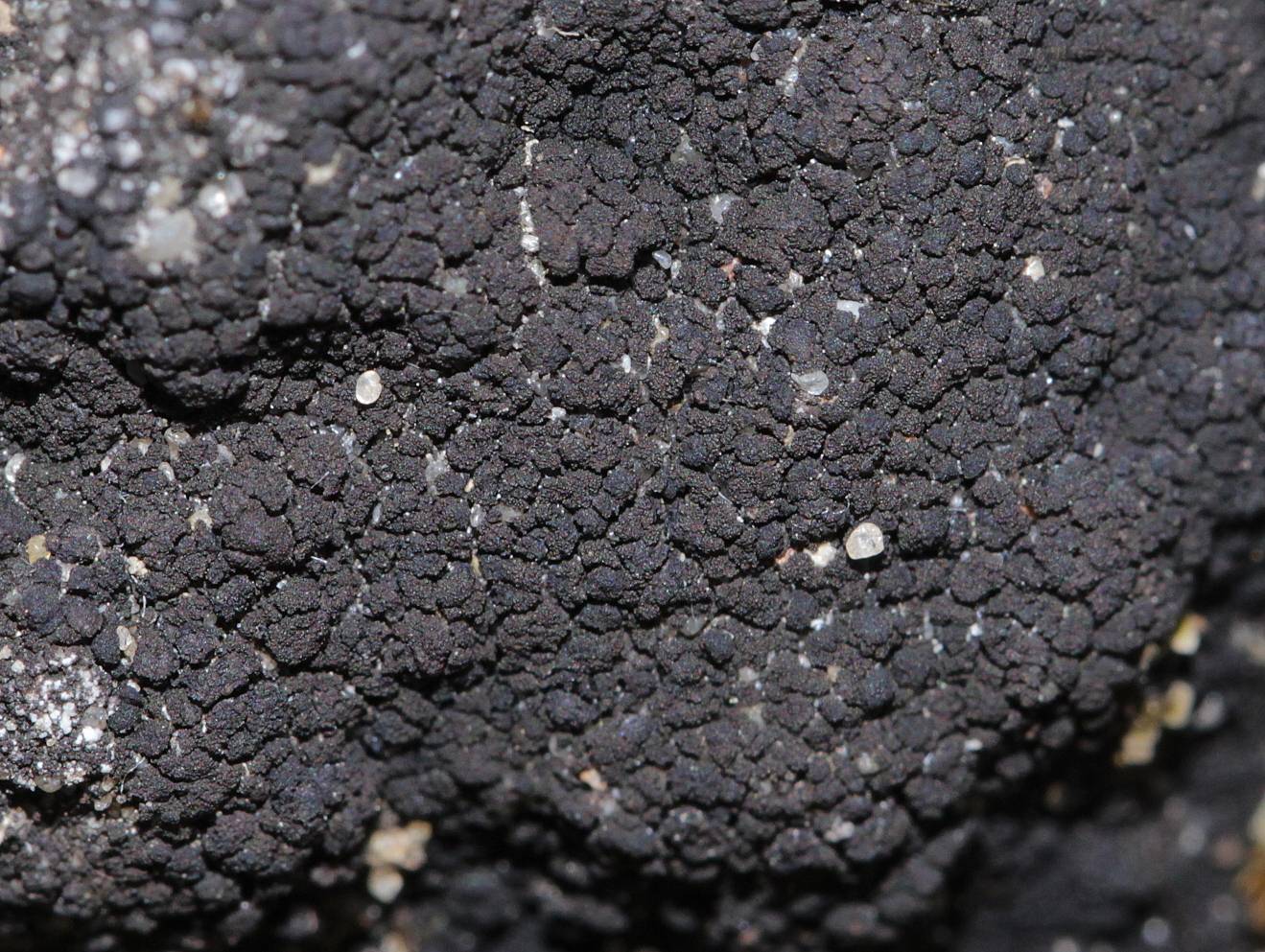
Consortium of Lichen Herbaria
- building a Global Consortium of Bryophytes and Lichens as keystones of cryptobiotic communities -
- Home
- Search
- Images
- Species Checklists
- US States: O-Z >
- US National Parks
- Central America
- South America
- US National Parks
- Southern Subpolar Region
|
Family: Trapeliaceae |
Nash, T.H., Ryan, B.D., Gries, C., Bungartz, F., (eds.) 2004. Lichen Flora of the Greater Sonoran Desert Region. Vol 2. Thallus: crustose, effuse, granular-verrucose or leprose, or of isidiate-granular goniocysts or areoles, dark green-brown to black, sometimes tinged reddish or pale to chestnut brown anatomy: goniocysts or areoles with an outer layer of brown-walled pseudoparenchymatous hyphae, colorless within photobiont: primary one a chlorococcoid green alga (Chlorella, Gloeocystis), secondary one absent Ascomata: apothecial, biatorine or lecideine, red-brown to brown-black or black, +innate or appressed to sessile, often soon immarginate, without a thalline exciple exciple: composed of brown-walled, pseudoparenchymatous cells, well developed but often reflexed, C- epihymenium: dark brown hymenium: pale brown or pale yellow to colorless in thin sections, gel I+ green-blue paraphyses: coherent, gelatinized, simple to often abundantly branched but only weakly anastomosing, the tips thickened, c. 2 µm thick, irregularly +capitate, with dark brown or red-brown caps hypothecium: dark brown asci: clavate or cylindrical-clavate, K/I- or pale, even at the tip, Trapelia-type, with an apical dome I- or weakly I+ blue but with amyloid cap, with an amyloid outer wall, 8-spored ascospores: hyaline, simple (rarely 1-septate), ellipsoid, often containing a single large oil drop and/or several smaller droplets Conidiomata: unknown Secondary metabolites: none detected or orcinol depsides Substrate: on nutrient-poor, acidic, lime-free substrates, particularly on humus-rich soils, peat, bark, wood, less often on rocks Geography: world-wide in temperate areas in North and South America, Europe, Asia, Macaronesia, and Australia. Notes: Placynthiella is a segregate from Lecidea, usually easily recognized by the combination of having a dark thallus and usually growing on organic substrates or acidic soils. The K/I- ascus tips and pigmented paraphyses tips distinguish Placynthiella from Micarea and Biatora. It differs from Trapelia and Trapeliopsis in having a true exciple of brown-walled pseudoparenchymatous cells and paraphyses with +capitate apices, often with a dark brown apical cap. There has long been controversy over whether the correct name for this genus is Placynthiella or Saccomorpha (see Nimis and Poelt 1987; Coppins, et al. 1987). Placynthiella dasaea (Stirt.) Tønsberg, a sorediate species from the Pacific Northwest that is otherwise similar to P. icmalea, and P. hyporhoda (Th. Fr.) Coppins & P. James are not yet known from the region. The latter species differs from all other described species in the genus in having a K+ purple (color diffusing into surrounding mount) hypothecium. |
Powered by Symbiota









